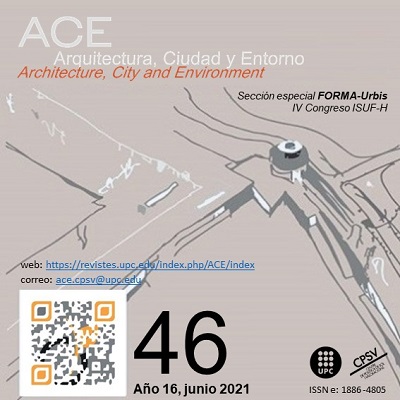Redefining Urban Landscape regarding Scientific Realism Philosophy of Science
DOI:
https://doi.org/10.5821/ace.16.46.9202Keywords:
Philosophy of science, scientific realism, production of spaceAbstract
The concept of urban landscape faces many complexities and ambiguities. These ambiguities lead to misunderstandings between academic sources and professional society. The “scape” and “landscape” terms also have changed from their origin. The term “image” and the concept of legibility makes it more complex. There are some disciplines referring to the concept of the urban landscape. Each of these disciplines knows itself as responsible for the urban landscape. This article tries to review the various literature of these two concepts counting the complexities of these terms and then presents a new definition for them. This article tries to review various notions about urban landscape and image through content analysis and library studies. The urban landscape of each city is the emergence of the reality of that city. It could not be reduced to an objective issue, neither is it subjective being shaped separately from an objective one. The urban landscape has been judged by dominant philosophies of science at a specific time. This research tries to go behind the various definition of an urban landscape which has been presented in a different time. After that, it provides a new framework through “scientific realism”. From the scientific realism point of view, the previous definition reduces the anthology of the urban landscape to its epistemology. According to this approach, mechanisms should be considered in presenting a new framework. According to critical realism and regarding Lefebvre’s reading of phenomenological materialism and by using Lefebvre’s production space theory and influential forces in the semiotic dimension of the urban landscape, a new theoretical framework could be suggested.
Published
Issue
Section
License
| INTELECTUAL PROTECTION CRITERIA |
At this moment, it is count with the "Oficina Española de Patentes y Marcas", while global protection it is being processed by the World Intelectual Property Organization (OMPI/WIPO). Nevertheless the International Standard Serial Number Office (ISSN) has given the following numbers ISSN: 1886-4805 (electronic version) and 1887-7052 (paper version). All articles will be peer reviewed, using double blind reviewing. |
| COPYRIGHT |
The article contents and their comments are authors exclusive liability, and do not reflect necessarily the journal editor commitee's opinion. All ACE published works are subject to the following licence CC BY-NC-ND 3.0 ES http://creativecommons.org/licenses/by-nc-nd/3.0/es/ It implies that authors do not hold nor retain the copyright without restrictions but only those included in the licence. |





































